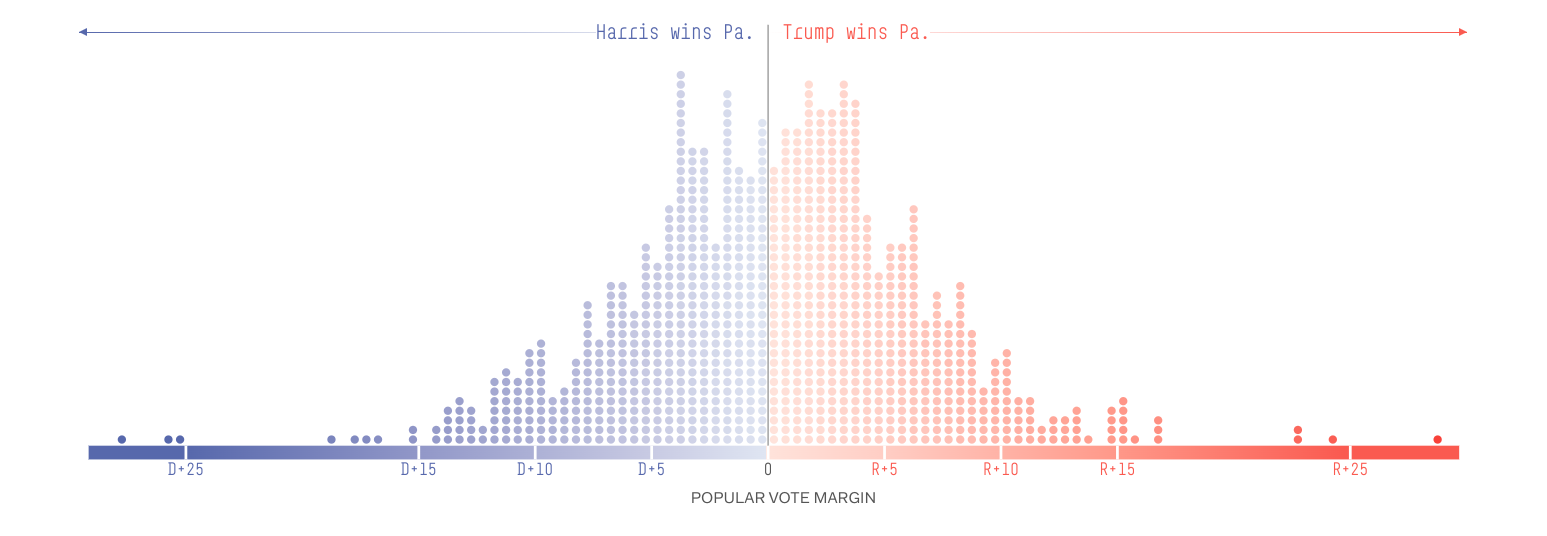The 2024 presidential election is a matter of weeks away. Polling predictions of whether Vice President Kamala Harris or Former President Donald Trump will win the election dominate the news, especially in Pennsylvania, a historical swing state whose votes are projected to be the tipping point for either Harris or Trump.
Since the 2000 election, polls in close states have been off by an average of 3.1 percentage points, a margin that often exceeds the close margins between Harris and Trump in Pennsylvania. This poses a complicated issue when margins between candidates are close, especially considering that the Electoral College allows a candidate to win the popular vote without winning the election. Kamala Harris has nearly always led in the popular vote, but the Electoral College outcome is much more difficult to predict. The election will likely be decided by seven swing states: North Carolina, Pennsylvania, Nevada, Wisconsin, Michigan, Georgia and Arizona.
The polls in the last two presidential elections have been extremely inaccurate in predicting the election outcome. 2016 polls severely underestimated former President Trump, with most predicting (incorrectly) that Hillary Clinton would win. 2020 polls correctly predicted current president Biden would win, but the actual margin Biden won by was expected to be more than double what it truly was. This makes the 2020 polls some of the most inaccurate in the last 40 years. However, the 2022 midterm election polling was some of the most accurate in recent history. One of the differences? Donald Trump was not on the ballot. Many analysts have concluded that Trump and his supporters are simply difficult to predict with current polling methods. In 2022, the Pew Research Center found that 61% of pollsters used different polling methods than in 2016. One of the major changes in response to Trump’s 2016 win was accounting for education level. Non-college graduates were much more likely to vote for Trump, something that most 2016 polls missed.
The methodology and timing of polls greatly impact their outcomes and influence. Good polls rely on “weighting,” a process that aligns the survey sample with the greater population demographics to ensure accuracy. Generally, this level of intervention is not desired, but it is necessary to account for sampling bias. For instance, older adults and college graduates are much more likely to respond to a survey, which skews the results. Poll timing matters because public opinion of candidates can shift quickly, such as when Harris became the de facto nominee for the Democratic Party after Joe Biden dropped out of the race.
As political strategist and former political director of the American Federation of Labor Michael Podhorzer says, “Horse race polls are opinion journalism, not science.” It seems that there is no way to accurately predict this close election until November 5.
